How did NASA mathematician Katherine Johnson calculate the trajectories for missions to space? With genius level STEM skills! Johnson, along with Dorothy Vaughan and Mary Jackson, are the three African-American women profiled in the book and film Hidden Figures. The women held positions with NASA as engineers and mathematicians in the 1960s and beyond. Johnson developed complicated equations determining voyage trajectories, ensuring a safe launch and landing for missions including the Friendship 7. Jackson uncovered flaws in a space capsule’s heat shield, saving the lives of astronauts. These contributions went largely ignored. Even today female scientists, engineers and mathematicians encounter sexism. The African-American women in Hidden Figures struggled against sexism and overt racism throughout their careers. In the film, Janelle Monáe playing Mary Jackson remarks, “Every time we get a chance to get ahead they move the finish line. Every time.”
At CLP – Hill District, we participated in the Carnegie Library of Pittsburgh’s system wide celebration of Black History Month using Super Science* kits and Hidden Figures as inspiration. Using our Super Science: Earth in Space kit, children visiting CLP – Hill District explored STEM concepts by launching rockets through space, constructing solar systems, learning about Dr. Mae Jemison and enjoying astronaut ice cream.
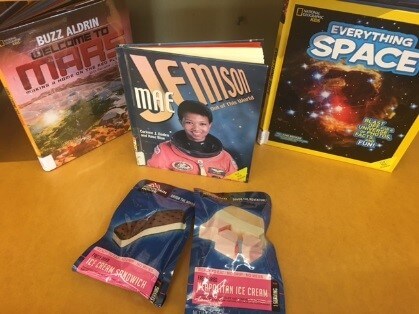
On a Saturday morning we set up inflatable planets included in the Super Science: Earth in Space kit across the Library. We then placed books from our nonfiction collection about each planet throughout the system so children could research the interstellar destination of their rocket ship. Children had a blast, launching stomp rockets and watching the foam fliers speed through space. Sure, we lost a few in the ceiling rafters, but what better way to learn about trajectories investigated by NASA mathematicians in Hidden Figures than by making some miscalculations in our flight paths?
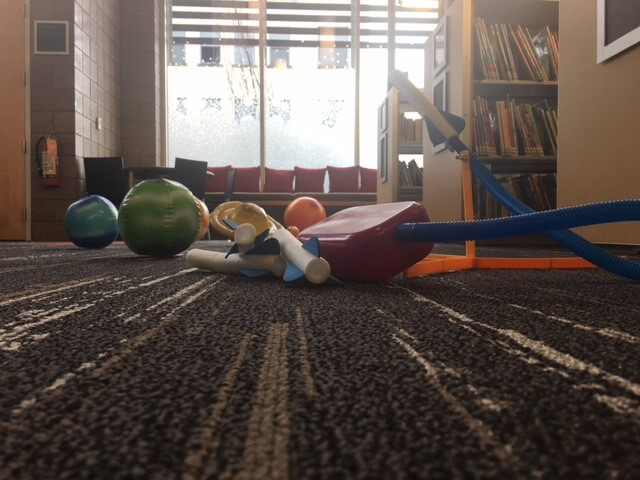
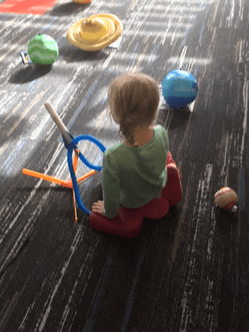
Incorporating Cubelets, small block like robots each with specific functions, and easily programmed by children, participants ventured through space on foot. After launching rockets participants took their exploratory missions to land building space roving robots to navigate our solar system. Munching on astronaut ice cream sandwiches and building space bots, a young expert remarked, “You forgot to have Pluto, even though it’s not a planet,” as we raced to locate the lost dwarf planet. By the end of the day we explored science, technology, engineering and math elements investigated in Hidden Figures, while hopefully inspiring some future space adventurers. As the authors of STEM Starts Early note, “Brain and skills-building experiences early in life are critical for child development, and high-quality early STEM experiences can support children’s growth across areas as diverse as executive function and literacy development.”
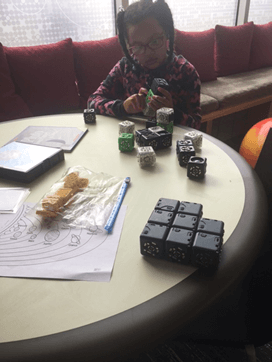
There are plenty of opportunities to engage with children outside the Library or classroom. Snack time or meals can be the perfect occasion to discuss moon phases! Using sandwich cookies, we included a lesson in our Super Science kit to make a chart by licking or slicing away the cream filling. Find a chart of moon phases and try to replicate the images using cookies (or a healthier option) at the table. Another activity includes using toilet paper squares at home to learn how far away each planet is from the sun.
Learn more about the work of Katherine Johnson, Dorothy Vaughan and Mary Jackson with Hidden Figures: Young Reader’s Edition by Margot Lee Shetterly recommended for ages 8-12. Read about a new scientist each evening before bed with Women in Science: 50 Fearless Pioneers Who Changed the World by Rachel Ignotofsky. Ron’s Big Mission, a picture book by Rose Blue, details astronaut Ron McNair’s encounters with racism in 1950s South Carolina as he attempts to get a library card at nine years old. Don’t hesitate to explore nonfiction books with younger children. Rookie Biographies series offers a short read about Dr. Mae Jemison for your preschool age child. Still feeling intimidated by STEM? Remember, there’s no need to be an expert. It’s all about learning together, and your local librarian is happy to connect you to STEM resources for all ages!
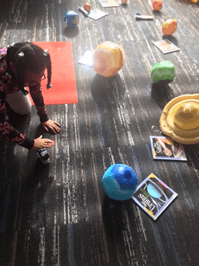
*Super Science programming at the Carnegie Library of Pittsburgh is supported in part by the PPG Foundation.
Kristin is the Children’s and Teen Librarian at CLP – Hill District. She enjoys embroidery, feminist children’s literature and strong female protagonists! The music of Mr. Rogers has been known to make her very emotional.
